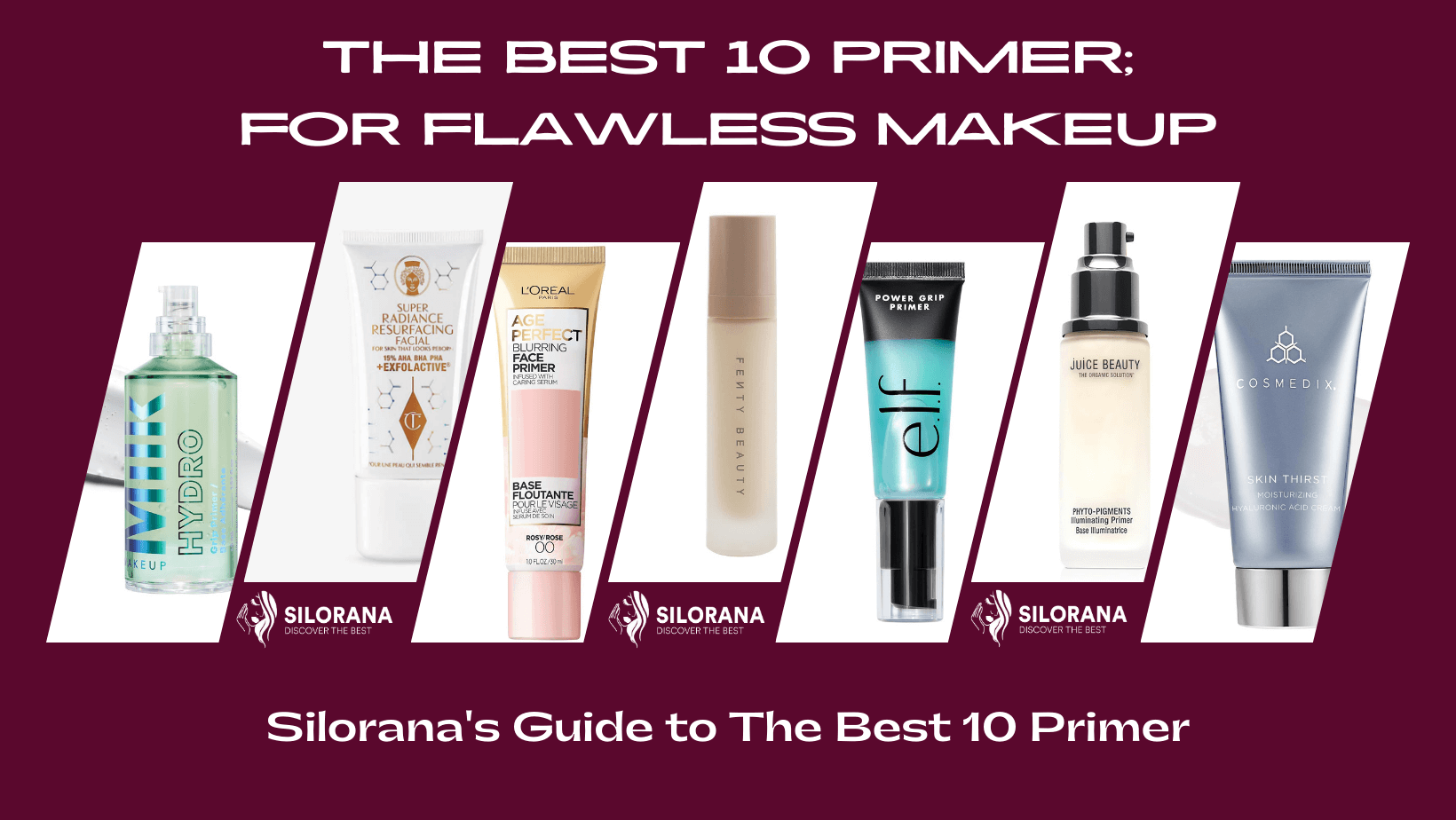Discover the right foundation shade is one of the most essential steps in any makeup routine.
The wrong shade can make your skin appear too pale, too orange, or unnaturally dull—ruining even the best makeup looks.
In This Article
ToggleLearn how to find your perfect foundation shade in 2025. Match your skin tone and undertone with expert tips, product suggestions, and a step-by-step routine.
Choosing the right shade is one of the most essential steps in any makeup routine.
The wrong shade can make your skin appear too pale, too orange, or unnaturally dull—ruining even the best makeup looks.
In this complete 2025 guide, we’ll teach you how to find your perfect shade based on:
Your skin tone
Your undertone
Your skin type
Seasonal changes
And your everyday makeup goals
Get ready to feel confident and radiant—with foundation that looks like your skin, only better.
In this article from SILORANA, we will take you on a comprehensive journey to learn about everything foundation that looks like your skin, only better and effective steps.

Don’t forget to share these tips with your friends to always have stable and bright makeup, and hair. If you need more details or want additional advice, do not hesitate to visit our website frequently.
What to Consider When Choosing Your Foundation Shade
1. Identify Your Undertone: The Foundation Game-Changer:
Your undertone is the subtle color beneath your skin’s surface, and it’s key to choosing the most natural-looking.
It doesn’t change with sun exposure like your skin tone does.
| Undertone | How to Identify It | Foundation Base That Suits You |
|---|---|---|
| Warm | Greenish veins, look better in gold jewelry | Yellow or golden undertones |
| Cool | Bluish/purple veins, look better in silver jewelry | Pink or rosy undertones |
| Neutral | Veins appear blue-green, both gold & silver look fine | Neutral/base tone foundations |
Pro tip: Test your undertone in natural daylight using both gold and silver accessories.
2.Choose a Shade That Matches Your Skin Tone:
| Skin Tone | Typical Foundation Labels |
|---|---|
| Very fair | Porcelain, Ivory |
| Fair | Light, Nude, Beige |
| Medium | Medium Beige, Sand |
| Tan | Honey, Caramel, Warm Tan |
| Deep | Cocoa, Mocha, Espresso |
Don’t forget to share these tips with your friends to always have stable and bright makeup, and hair. If you need more details or want additional advice, do not hesitate to visit our website frequently.
3. Always Test Foundation on Your Jawline or Neck (Not Your Hand!):
Many people test foundation on the back of the hand, but this area is often a different shade from the face.
The most accurate way is to apply small swatches of 2–3 shades along your jawline and blend slightly.
The one that disappears into your skin = your perfect match.
Read also about the Best 5 steps to moisturize dry skin during winter
Read also about The perfect skin care routine: How to always get radiant skin?
4. Step-by-Step Routine to Choose Your Perfect Foundation
Identify your undertone (use jewelry, vein color, or fabric test).
Understand your skin type (dry, oily, combination, sensitive).
Choose a foundation formula that suits your skin (matte, hydrating, dewy).
Test multiple shades side-by-side on your jawline—not hand or cheek.
Check the result in natural light.
Match it to your neck to avoid the dreaded “mask” effect.
Tip from Silorana
“The best foundation doesn’t change your skin tone—it enhances it. Focus on tone matching, not tone changing.”
- Stick to your routine: Make using creams part of your daily skincare routine.
- Choose ingredients carefully: Make sure the creams contain ingredients that suit your skin’s needs.
- Product Test: Test the cream on a small area of skin before full use.
- Skin Cleansing: Use a suitable cleanser before applying the cream for better absorption.
Conclusion: Elevate Your Beauty Level With he right foundation shade
Choosing the right shade isn’t just about looking good—it’s about creating a healthy, natural, and even base that makes all your makeup shine.
By understanding your undertone, testing in the right places, and adjusting for skin type or seasons, you’ll never waste money on the wrong foundation again.
Don’t forget to share these tips with your friends to always have stable and bright makeup, and hair. If you need more details or want additional advice, do not hesitate to visit our website frequently.
Fifth: Frequently asked questions about the right foundation shade
1. How do I know my skin’s undertone?
Your undertone is the fixed hue under your skin. It affects how foundation, lipstick, and even clothing looks on you.
Here are 3 reliable ways to find it:
✓ Vein Test:
Look at your inner wrist in natural light:
Green veins = Warm undertone
Blue/purple veins = Cool undertone
Mix = Neutral
✓ Jewelry Test:
Gold looks better on you? → Warm
Silver looks better? → Cool
Both look fine? → Neutral
✓ Fabric Test:
Hold up white vs. off-white fabric near your face.
If white makes your skin glow → Cool
If creamy off-white suits better → Warm
If both work → Neutral
Knowing your undertone helps you avoid foundation that looks ashy, grey, or orange.
2. Can I use more than one foundation shade?
Yes—and this technique is even encouraged by professional makeup artists.
Why?
Because your face naturally has different tones in different areas:
Center of the face: usually lighter
Outer edges: may appear deeper
Skin tone varies between summer and winter
Using two foundation shades can:
Create a soft contour/highlight effect
Help blend neck and face for a seamless look
Save you from needing multiple products
How to use them:
Apply the lighter shade in the center of the face (under-eyes, forehead, nose).
Use the slightly deeper shade on the sides of the face, jawline, and temples.
Blend with a sponge or brush to achieve a natural, sculpted finish.
3. Does my foundation shade change with the seasons?
Yes! It’s very common—and totally normal.
Here’s how:
In summer, skin is more exposed to sunlight, leading to natural tanning. You may need a shade 1–2 levels deeper.
In winter, less sun exposure often means skin appears paler or drier—so you may need a lighter, more hydrating formula.
Pro tip:
Keep two foundation shades in your kit—one for summer and one for winter—or mix them as needed throughout the year.
4 .What’s the difference between shade and undertone?
Many people confuse these two—but they serve different purposes.
| Term | Definition | Affects… |
|---|---|---|
| Shade | Lightness or darkness of the product | Skin depth (fair to deep) |
| Undertone | The hue beneath the skin’s surface (warm/cool/neutral) | Natural harmony of makeup |
For example:
You can be medium with a warm undertone (use “Medium Warm”).
Or deep with a cool undertone (use “Deep Cool”).
Using the correct undertone ensures your foundation blends in perfectly without looking too pink, yellow, or grey.
5. What’s the best foundation for everyday use based on skin type?
Choosing the right daily foundation means considering:
Your skin type
Your desired finish (matte, dewy, natural)
Sun protection needs
🧴 For oily or acne-prone skin:
Use matte, oil-free foundations
Look for terms like “shine control” or “long-wear”
Great options:
Fenty Beauty Pro Filt’r
Maybelline Fit Me Matte + Poreless
💧 For dry or sensitive skin:
Use hydrating, serum-based formulas
Ingredients like hyaluronic acid, ceramides, or niacinamide help nourish
Try:
ILIA Super Serum Skin Tint
NARS Light Reflecting Foundation
🌞 For light daily wear:
Go for BB creams, tinted moisturizers, or foundations with SPF
Great for minimal makeup lovers
Try:
Dr. Jart+ Cicapair Color Correcting Cream
Always make sure your everyday foundation is non-comedogenic, fragrance-free, and suited to your undertone.








